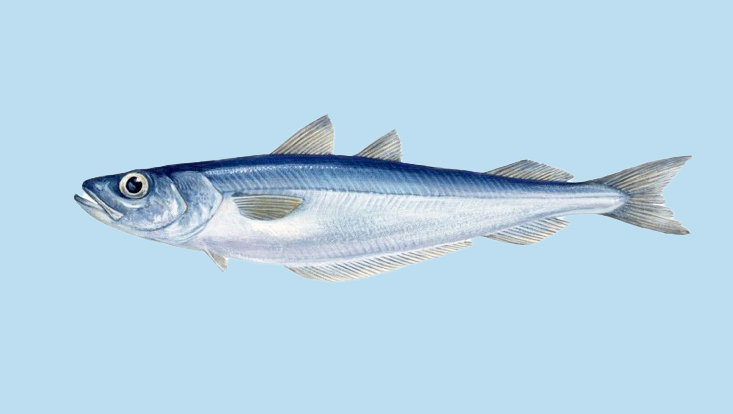Climate Change and Sea FishHow habitat shifts can be predicted
12 July 2022, by Dr. Anna Katharina Miesner

Photo: Scandinavian Fishing Year Book
Though never seen so far north before, tuna and mackerel can now be found in the waters off Greenland. Climate change is affecting living conditions in the ocean, driving many species to migrate to new habitats. The fishing sector and political decision-makers have to respond – partly in order to ensure the fishing grounds can be used sustainably. But can the spatial distribution of individual fish species be reliably predicted?

Dr. Anna K. Miesner ©Svenja Gertz
That’s a question I’ve looked into at Universität Hamburg’s Center for Earth System Research and Sustainability. To do so, I combined physical conditions on the one hand and biological relations on the other, while also employing a range of model-based approaches. I chose a species of cod that can be found in an ocean basin west of Ireland: the blue whiting. There is a wealth of data available in the region; the distribution of its larvae is well-documented back to the 1950s. But under what conditions did the fish feel particularly comfortable in the North Atlantic, leading it to lay its eggs in an especially broad area? To find out, I also took a closer look at physical data on these spawning grounds, like temperature and salinity.
My findings show that blue whiting prefers to lay its eggs where the water is warm and saline. I wanted to put this important relation to use. Climate and Earth system models can also yield data and forecasts on the salinity and temperature of the ocean, that is, on the marine climate, around the globe. Could this information be used to make predictions regarding the habitat of the blue whiting?
To make predictions on the marine climate, I used a complex Earth system model that reflects interactions between the atmosphere, ocean and land. Accordingly, the model can also predict the future temperature and salinity at the spawning grounds. Apparently, local fluctuations in the ocean also affect the preferred spawning grounds. A weak North Atlantic subpolar gyre would seem to offer favorable conditions: when this powerful current is positioned to the west, more subtropical water masses from the south can penetrate the breeding grounds. This water is more saline and warmer –just the way the blue whiting likes it.
But first I made some retrospective forecasts, also called hindcasts: as a test, I fed the model ocean data from the past several decades. This yielded data on the spawning grounds’ temperature and salinity, which allowed me to deduce the size and location of the spawning ground. I then used actual larvae records to check the hindcasts accuracy. And they worked: for the most part, the hindcasts matched the observations.
In this way, I succeeded in translating forecasts on the marine climate into biological forecasts: the extent of the breeding grounds can now be predicted roughly a year in advance. Moreover, my method can also be applied to other fish species. Knowing the spatial distribution of a given species can save costs when it comes to monitoring and management. Further, conflicts over fishing grounds can be defused or avoided in advance. Small island nations and developing countries that depend on fishing could benefit as well.
More Information
Dr. Anna Katharina Miesner is an oceanographer at Universität Hamburg.
Newspaper: This article was first published as a guest article in the Hamburger Abendblatt as part of a monthly series on climate research. Find all articles of the series here.


